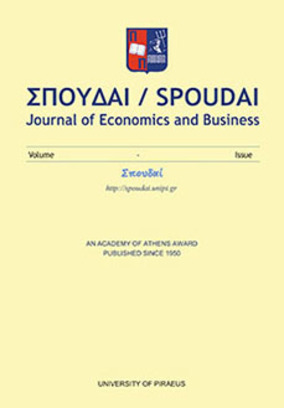Interest rate volatility and its effect on unemployment in European Union and the United States
Part of : Σπουδαί : journal of economics and business ; Vol.54, No.3, 2004, pages 9-36
Issue:
Pages:
9-36
Author:
Abstract:
In a market oriented economy, the increase in (industrial) production will increase demand for labor and unemployment will decline. The same will happen with an expansionary monetary and fiscal policy. The risk is expected to have a positive (workers will supply more labor) or a negative (firms will demand less labor) effect on employment. Here, a simple expectations-augmented Phillips curve, combined with the equation of exchange and through an IS curve, gives the optimal unemployment rate. A GARCH (p, q) process is used to determine the risk (measured with the volatility of the real interest rate) in our economy. The results show that the EU country-members are different from each other and distinct from the U.S. market-oriented economy. Consequently, the current European Union is not working as a free market economy and might be required more time to adjust in the future with all these tremendous structural, cost, urbanization, and demographic changes and its rapid expansion with ten new members from this year.
Subject (LC):
Keywords:
economic integration, financial aspects of economic integration, open economy macroeconomics, international policy coordination
Notes:
Περιέχει πίνακες, σημειώσεις και βιβλιογραφία, An earlier version of this paper has been presented at the EEA Annual Conference in New York City and I am grateful for the comments from the discussant and the audience. I am also grateful for travel support for the above conference from the Dean of KSOM, Dr. Ronald Johnson. I would like to acknowledge the help provided by my research assistants, Maen Abdelhafez, Kristin M. Mangan, Andrew Witko, Lajja Shah, and Suvrat Gupta. The usual disclaimer applies.




